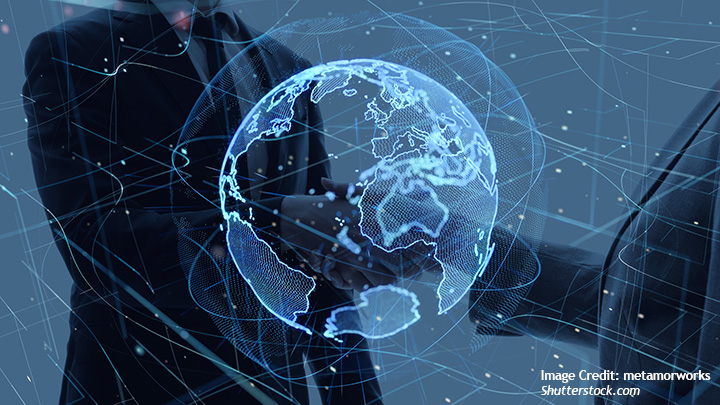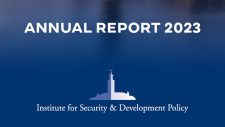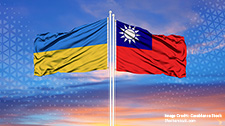South Korea’s Indo-Pacific Strategy, Atmanirbhar Bharat, and the IPEF: Convergence and Commonality

Jagannath P. Panda
For some time now, the existing multilateral networks such as those of the United Nations (UN) system have been largely ineffective in providing good global governance and helping create resilience, especially among the emerging and developing economies. The latest example that highlights the inefficacy of the current system is the collapse of the Black Sea grain deal despite genuine UN efforts.1
As a result, the world order is experiencing a precarious transition. This has necessitated countries across the world to create newer cooperative multilateral mechanisms that are in tune with the times and can potentially give rise to a resilient strategic landscape, such as providing favorable conditions for economic security.
The U.S.-initiated Indo-Pacific Economic Framework for Prosperity (IPEF), which was launched in May 2022 with 12 founding members (currently up to 14, namely the United States, Japan, Australia, New Zealand, South Korea, India, Fiji, and seven countries belonging to the Association of Southeast Asian Nations [ASEAN]) representing about 40 percent of the world’s gross domestic product (GDP), is one such negotiation platform.[1] Notably, it is not a traditional trade deal, and does not offer tariff or market access negotiations, but focuses on creating sustainable (e.g., “worker-centric” trade) architecture.[2]
Even as the IPEF is about the U.S. regaining its foothold in the Indo-Pacific, the forum’s topmost priority is to mitigate economic insecurity and harness the strengths of the Indo-Pacific as the world’s economic engine by creating a zone of economic cooperation. Its four key pillars of trade (I), supply chains (II), clean economy (III), and fair economy (IV) aim to strengthen the transformation in each of these sectors to give momentum to global economic growth.
South Korea and India, both part of the initial dozen members, as Asian economic powerhouses are essential to the IPEF fold. On the other hand, the IPEF and what it offers could be pivotal for their respective global ambitions (e.g., globally competitive “Atmanirbhar Bharat” – self-reliant India – and Korea’s “Global Pivotal State”) and regional strategies that have found growing congruence. But could the IPEF emerge as a “forum of convergence and expansion” for India-South Korea strategic cooperation?
Ascertaining India-South Korea Economic Convergence
The surging economic relationship between South Korea and India is the key driving factor providing momentum to the bilateral growth. In 2022, India-South Korea trade reached an all-time high of US$27.8 billion, growing by 17.3 percent from US$23.7 billion in 2021.[3] It is higher than Japan’s bilateral trade with India, which totaled US$21.96 billion during the financial year 2022-23.[4] However, it pales compared to the India-China trade, which increased by 8.47 percent year on year reaching US$136.26 billion.[5]
China is also South Korea’s top trading partner, with over US$300 billion in bilateral trade.[6] But in the last year, reports have highlighted that South Korea’s overdependence on China has been dipping: Korean exports to China have steadily declined from 26.8 percent in 2018 to 22.8 percent in 2022.[7]
On the positive side, India is among the countries (some others include the United States, Vietnam, and Australia) with which trade is enhancing; it is emerging as one of the top export destinations for South Korea.[8] India showed positive trends in five categories of Korean exports: petrochemicals, steel, displays, secondary batteries, and plastic products.[9] On the other hand, major exported items from India to Korea include petroleum and aluminum products.[10]
These goods trade lacuna highlight the immense potential that exists for growth in various sectors from renewables to agricultural goods in the coming years. If this trend continues or is enhanced, the goal to increase bilateral trade to US$50 billion by 2030, as agreed in 2018, might just as well get realized.
Notably, it must be pointed out that the impetus provided by current geopolitical circumstances notwithstanding, this onward trend in economic ties is not an abrupt phenomenon. During the 50 years of their diplomatic relationship, the trade and investment have received a fillip since 2009 when a Joint Task Force was established to conclude the Comprehensive Economic Partnership Agreement (CEPA), which came into effect in 2010 – the same year India and Korea became strategic partners.[11]
This was boosted during Prime Minister Modi’s visit to Seoul in 2015 as the two sides became “special strategic partners.” Moreover, post the Modi-Moon Jae-in summit in 2018, the convergence between the Act East Policy (AEP) and New Southern Policy (NSP and later NSP Plus) gave hope for a greater economic-strategic connect. This was done via initiatives such as “Korea Plus” which facilitated Korean investments in India or the “K-New Deal” and focused on diplomatic outreach for diversifying trade options.[12]
Yet several gaps exist: most prominent being the lack of an updated CEPA (for which “forward-looking and outcome-oriented” negotiations are ongoing) – India’s share in Korea’s global trade is still weak, nearly 1.9 percent in 2021 – and a yawning lack of push in regional cooperation initiatives to achieve common aims such as economic growth and regional integration.[13]
The Yoon Suk Yeol administration seems aware of this challenge to catapult the relations, especially as India is showing great economic resurgence despite global concerns (e.g., rising violence due to majoritarianism or systemic challenges including bureaucratic red tape). Yoon has amplified the already burgeoning sentiment toward India by including India as one of the top priorities in its Indo-Pacific strategy document. He has also highlighted the strength of high-level meetings and the alignment with India’s Indo-Pacific interests and visions (e.g., Security and Growth for All in the Region [SAGAR] and Indo-Pacific Ocean Initiative) to boost security as well as initiatives like “Atmanirbhar Bharat” to enable technology-centered joint production.
Be it Foreign Minister Jin Park’s India visit, the fifth Korea-India Foreign Policy and Security Dialogue, or the Modi-Yoon bilateral meeting at the G7 sidelines, the intent toward providing fresh impetus to the economic security-centered bilateral to help expand the strategic reach and cooperation is evident on both sides.[14] Multilateral and minilateral cooperation, such as within the IPEF, is part of this overall agenda.
Inside IPEF: Exploring Common Denominators
India’s decision to join the IPEF as a founding member in 2022 not only heralded its entry into a regional trade-focused architecture but also provided encouraging signs for multifaceted cooperation with Indo-Pacific partner states, such as Japan and South Korea. Importantly, the IPEF is also the only multilateral economic platform that brings South Korea and India together – neither state is part of the Comprehensive and Progressive Agreement for Trans-Pacific Partnership (CPTPP), although Korea has been looking to “foster conditions” for joining the CPTPP.[15] Naturally, a forum with such unique traits encourages expectations of new opportunities for both economic growth and regional integration.
At the same time, India has opted out of Pillar I (trade) for which it remains an observer; while being an active participant in the other pillars. For the trade-focused IPEF, India’s absence in a core pillar has been seen as a hiccup, not yet a hindrance; moreover, there are encouraging reports that India is looking to negotiate its stance after reviewing the details, looking for better market access and ensuring that its domestic industry is not negatively impacted.[16] At the same time, some have argued that India’s entry into the IPEF was probably helped due to “the absence of market access negotiations,” that is, no expectation of negotiating its tariff reductions.[17]
For South Korea, the IPEF is a platform to advance its multilateral aims, be it the objectives of physical and digital connectivity or trade facilitation to boost economic cooperation via the markets in 13 countries. It is also an opportunity to take a leadership role for shaping rules “with the aim to produce meaningful outcomes” in the rapidly evolving Indo-Pacific region.[18] For both India and South Korea, the IPEF is another tool to enhance their AEP-NSP confluence and fulfill their shared interests in achieving a peaceful and prosperous Indo-Pacific. Their respective strategies align well with the IPEF’s objectives of promoting transparent and sustainable trade, digitalization, supply chain resilience, and connectivity while ensuring responsible governance by being active participants in this rewriting of rules.
In other words, the IPEF complements the Indo-Pacific strategies of South Korea and India by aligning with their regional outlooks and providing a broader platform for cooperation. In addition, it ultimately offers a broader collaborative framework with “like-minded” countries where efforts toward their regional objectives can be coordinated.
The China Conundrum
South Korea and India also share a common outlook on the IPEF in that they shy away from projecting the IPEF as an American economic mechanism to reduce China’s clout in the Indo-Pacific and balance out Beijing’s influence – a commonly held perception. Both India and South Korea have continually stressed on the principle of inclusivity and officially aim for regional cooperation without explicitly excluding China – their top trading partner, which they can hardly afford to keep at a distance.[19]
However, despite their emphasis on inclusion and maintaining bilateral ties with China, the IPEF will undoubtedly be used by the two partners as a ground to reduce their dependence on Beijing. One of the key reasons for both India and Korea joining the forum was to mitigate the disruptions caused by global overdependence on China during the COVID-19 pandemic. The swift, “substantial” conclusion of the negotiations of a “first-of-its-kind” IPEF Supply Chain Agreement in mid-2023 highlights that the regional countries are universally committed in accelerating efforts to diversify and stabilize supply chains.[20] As the IPEF’s first concrete result just a year after launch, the initiative seems to be moving in a constructive direction amid domestic reservations in the U.S.[21]
Areas of Special Interest
Notably, the technology sector offers promising opportunities for collaboration. South Korea’s strong manufacturing capabilities and advanced technological expertise can be combined with India’s efforts to develop domestic production capabilities. For this suppose, joint ventures, technology transfers, and research and development collaborations within the IPEF could be boosted.
Yoon envisions South Korea becoming a “semi-conductor superpower” supported by government investments to avoid being left behind in a fast-evolving sector dominated by Taiwanese firms and facing stiff competition from China.[22] The IPEF can help enhance mutual cooperation by boosting the various partners’ capabilities through a veritable semiconductor ecosystem.[23] For the two partners, India which is aiming to fast-track its manufacturing capacities in semiconductors can utilize South Korea’s long-standing manufacturing expertise on a bigger scale than just bilaterally.
The digital economy presents another avenue for cooperation, leveraging India’s growing digital prowess and South Korea’s advanced digital infrastructure. Regular consultations, business forums, joint working groups, and policy dialogue can facilitate ongoing cooperation, allowing both to identify areas of mutual benefit and foster a thriving partnership within the IPEF framework.
In turn, this cooperation under the IPEF can then help India and South Korea build stronger bilateral trade and economic contacts by improving access for Indian and South Korean businesses to each other’s markets. By collaborating within the IPEF, the two countries can work together to create a system that is beneficial to them, potentially by enhancing regional and bilateral economic exchanges, even as the IPEF does not currently include market access negotiations.
Building connectivity and infrastructure development, such as better transport networks and logistics, will further improve the efficacy of bilateral trade and ameliorate the movement of goods and people between India and South Korea. Business networking and partnerships through summits and forums organized under the IPEF will provide valuable opportunities to grow contacts and foster new collaborations.
The IPEF will undoubtedly contribute to India’s economic growth as well as its resilience in the event of an economic crisis, which will also benefit South Korea as their interconnectedness grows.[24] Moreover, South Korea’s active efforts to achieve results under the IPEF, as demonstrated by a recent public-private meeting held to further the new supply chain agreement, signify Seoul’s commitment and a future beneficial economic relationship with India.[25]
Policy Prompts
- India and South Korea could potentially figure multifaceted ways to partner with IPEF members that are at the forefront of building regional economic-security architecture like Australia, Japan, and the US to possibly jointly invest in third countries to increase chances for global equitable growth.
- They could also effectively cooperate on financing climate action in the Indo-Pacific, as also in promoting public access to digitalization through, say, India’s Unified Payments Interface (UPI) to expand digital economy.
- New Delhi will need to employ smart strategies with the Korean companies interested in coming to India and investing. The approach should not only be to encourage to come and invest in India but also to create an atmosphere on the operational aspects to stay aware of India’s rules and regulations in order to avoid meeting any future administrative and bureaucratic difficulties and hurdles. Regular corporate summits and meetings to create market awareness are necessary measures that must be planned to inject a new level of confidence that is required among the business communities in South Korea that are already viewing India through a new strategic lens as a promising and future power to cooperate with. Such an endeavor will only help boost strategic confidence, both bilaterally and regionally, between South Korea and India.
Notes
[1] The White House, “Fact Sheet: In Asia, President Biden and a Dozen Indo-Pacific Partners Launch the Indo-Pacific Economic Framework for Prosperity,” Briefing room, May 23, 2022, https://www.whitehouse.gov/briefing-room/statements-releases/2022/05/23/fact-sheet-in-asia-president-biden-and-a-dozen-indo-pacific-partners-launch-the-indo-pacific-economic-framework-for-prosperity/(accessed on August 1, 2023)
[2] William Alan Reinsch and Elizabeth Duncan, “Are Market Access Negotiations in the IPEF Unnecessary?” Critical Questions, CSIS, June 24, 2022, https://www.csis.org/analysis/are-market-access-negotiations-ipef-unnecessary (accessed on August 6, 2023)
[3] Embassy of India, Seoul, “Brief on India-Korea Economic and Commercial Relations,” (last updated) August 2022, https://www.indembassyseoul.gov.in/india-rok-trade-and-economic-relations#:~:text=Bilateral%20Trade%3A%20India%27s%20share%20in,export%20market%20as%20of%202021. (accessed on July 29, 2023), Press Trust of India (PTI), “Indo-Korea bilateral trade grows 17 pc to record USD 27.8 bn in 2022,” Economic Times, April 26, 2023, https://economictimes.indiatimes.com/news/economy/foreign-trade/indo-korea-bilateral-trade-grows-17-pc-to-record-usd-27-8-bn-in-2022/articleshow/99792343.cms?from=mdr (accessed on August 19, 2023)
[4] Embassy of India, Tokyo, “India – Japan Commercial Relations,” July 2023, https://www.indembassy-tokyo.gov.in/eoityo_pages/NjA, (accessed on August 1, 2023)
[5] Embassy of India, Beijing, “Trade and Economic Relations,” (last updated) August 18, 2023, https://www.eoibeijing.gov.in/eoibejing_pages/MjQ, (accessed on August 19, 2023)
[6] Korea International Trade Association (KITA), “All Countries,” http://kita.org/kStat/byCount_AllCount.do (accessed on August 20, 2023)
[7] Song Seung-hyun, “Export dependency on China wanes,” Korea Herald, June 6, 2023, https://www.koreaherald.com/view.php?ud=20230606000125 (accessed on August 21, 2023)
[8] KITA, “All Countries”; Ibid.
[9] Kim Hyun-bin, “Korea’s export dependency on China dips below 20%,” Korea Times, June 5, 2023, https://www.koreatimes.co.kr/www/tech/2023/08/129_352367.html (accessed on August 14, 2023)
[10] India Brand Equity Foundation, “India-Korea Trade,” (last updated) March 2023, https://www.ibef.org/indian-exports/india-korea-trade (accessed on August 5, 2023)
[11] Ministry of External Affairs, “India – Republic of Korea Bilateral Relations,” October 2017, https://mea.gov.in/Portal/ForeignRelation/Republic_of_Korea_October_2017.pdf (accessed on July 29, 2023)
[12] Jagannath Panda, “Moon’s ‘New Deal’ visions and India-South Korea economic ties,” Korea Times, October 29, 2020, https://www.koreatimes.co.kr/www/opinion/2023/08/137_298431.html (accessed on July 27, 2023)
[13] “Brief on India-Korea Economic and Commercial Relations,” Embassy of India in Seoul, Updated August 2022, https://www.indembassyseoul.gov.in/india-rok-trade-and-economic-relations#:~:text=The%20bilateral%20Comprehensive%20Economic%20Cooperation,stands%20at%20US%247.27%20billion (accessed on July 29, 2023); Ministry of Commerce & Industry, India, “Ninth Round of India-ROK CEPA Up-Gradation Negotiation held in Seoul,” November 2022, https://pib.gov.in/PressReleasePage.aspx?PRID=1873807#:~:text=The%209th%20round%20of,forward%20looking%20and%20outcome%20oriented. (accessed on August 2, 2023)
[14] Ministry of Foreign Affairs (MOFA), South Korea, “Spokesperson’s Press Briefing,” April 4, 2023, https://www.mofa.go.kr/eng/brd/m_5679/view.do?seq=320024 (accessed on August 3, 2023) “India, South Korea Hold Foreign Policy and Defence Talks,” Statecraft, January 18, 2023, https://www.statecraft.co.in/article/india-south-korea-hold-foreign-policy-and-defence-talks (accessed on August 4, 2023)
[15] Ministry of Trade, Industry, & energy, Korea, “Trade Minister attends 16th Trade Advisory Committee Meeting,” January 1, 2023, http://english.motie.go.kr/en/pc/pressreleases/bbs/bbsView.do?bbs_cd_n=2&bbs_seq_n=1171 (accessed on August 4, 2023).
[16] Abhimanyu Sharma, “India wants more clarity from US on trade pillar of IPEF, concerned over market access for domestic firms,” CNBC, March 10, 2023, https://www.cnbctv18.com/world/india-wants-more-clarity-from-us-on-trade-pillar-of-ipef-concerned-over-market-access-for-domestic-firms-16140781.htm (accessed on August 19, 2023); Aanchal Magazine, “India weighs better market access to join IPEF trade pillar,” Indian Express, July 14, 2023, https://indianexpress.com/article/business/economy/india-weighs-better-market-access-to-join-ipef-trade-pillar-8835160/ (accessed on July 23, 2023)
[17] Mizuki Okada, “Who Benefits from the Indo-Pacific Economic Framework?” Japan Forward, June 20, 2022, https://japan-forward.com/who-benefits-from-the-indo-pacific-economic-framework/ (accessed on July 27, 2023)
[18] Ministry of Trade, Industry, & energy, Korea, “Trade Minister attends 16th Trade Advisory Committee Meeting,” January 1, 2023, http://english.motie.go.kr/en/pc/pressreleases/bbs/bbsView.do?bbs_cd_n=2&bbs_seq_n=1171 (accessed on July 29, 2023)
[19] Jo He-rim, “Seoul’s IPEF move aimed to expand presence in Indo-Pacific, reduce dependence on China: experts,” Korea Herald, May 23, 2022, https://www.koreaherald.com/view.php?ud=20220523000734 (accessed on August 2, 2023)
[20] Office of Public Affairs, U.S. Department of Commerce, “Press Statement on the Substantial Conclusion of IPEF Supply Chain Agreement Negotiations,” May 27, 2023, https://www.commerce.gov/news/press-releases/2023/05/press-statement-substantial-conclusion-ipef-supply-chain-agreement (accessed on August 5, 2023)
[21] Ana Swanson, “Biden Administration Announces Indo-Pacific Deal, Clashing With Industry Groups,” New York Times, May 27, 2023, https://www.nytimes.com/2023/05/27/business/economy/biden-indo-pacific-trade-deal.html (accessed on August 7, 2023)
[22] Park Eun-Jee, “Korea’s dominance in semiconductors must grow, says Yoon,” Korea JoongAng Daily, May 10, 2022, https://koreajoongangdaily.joins.com/2022/05/10/business/tech/Korea-semiconductor-Samsung-Electronics/20220510150329238.html (accessed on July 26, 2023)
[23] Emily Benson, Japhet Quitzon, and William Alan Reinsch, Securing Semiconductor Supply Chains in the Indo-Pacific Economic Framework for Prosperity (CSIS, May 30, 2023), https://www.csis.org/analysis/securing-semiconductor-supply-chains-indo-pacific-economic-framework-prosperity (accessed on July 26, 2023).
[24] Srikanth Kondapalli, “Indo-Pacific Economic Framework– Advantages for India,” IMPRI, June 5, 2022, https://www.impriindia.com/insights/indo-pacific-economic-framework-india/ (accessed on July 26, 2023)
[25] Oh Seok-min, “S. Korea holds public-private meeting on IPEF developments, future strategies,” Yonhap, May 31, 2023, https://en.yna.co.kr/view/AEN20230531004800320 (accessed on August 2, 2023).
This paper is published as an Issue Brief at the Center for Air Power Studies in New Delhi. The Brief can be accessed here.
Related Publications
-
ISDP Annual Report 2023
ISDP’s Annual Report for the year 2023. We look back on 2023, a year in which tensions and conflicts captured the strategic space in ISDP’s focus areas, making headlines around […]
-
EU-Thailand FTA Negotiations: IUU Fishing and Human Rights Remain Obstacles
Thailand’s fishing industry, which at its height saw as many as 200,000 migrant workers from neighboring Laos, Myanmar, and Cambodia caught in a brutal system of abuse, withered global criticism […]
-
India-Japan-Philippines: A Strategic Maritime Trilateral or More?
Regional states like India, Japan, and the Philippines have been seeking cooperative solutions with other middle powers that can both counter the Chinese influence and fulfill other economic as well […]
-
Washington Declaration: Beyond Korea, What it Means for India?
In April 2023, South Korea and the United States released the Washington Declaration to reiterate and upgrade their treaty alliance. In outlining a joint nuclear deterrence strategy, the Declaration reaffirmed […]
-
Not Drawing a Parallel. Ukraine and Taiwan: An Indian Perspective
Russia’s war against Ukraine has not only had economic, diplomatic, and geopolitical repercussions, but also exaggerated the fear of accelerated conflicts in the Indo-Pacific, a region with several unresolved conflicts […]




